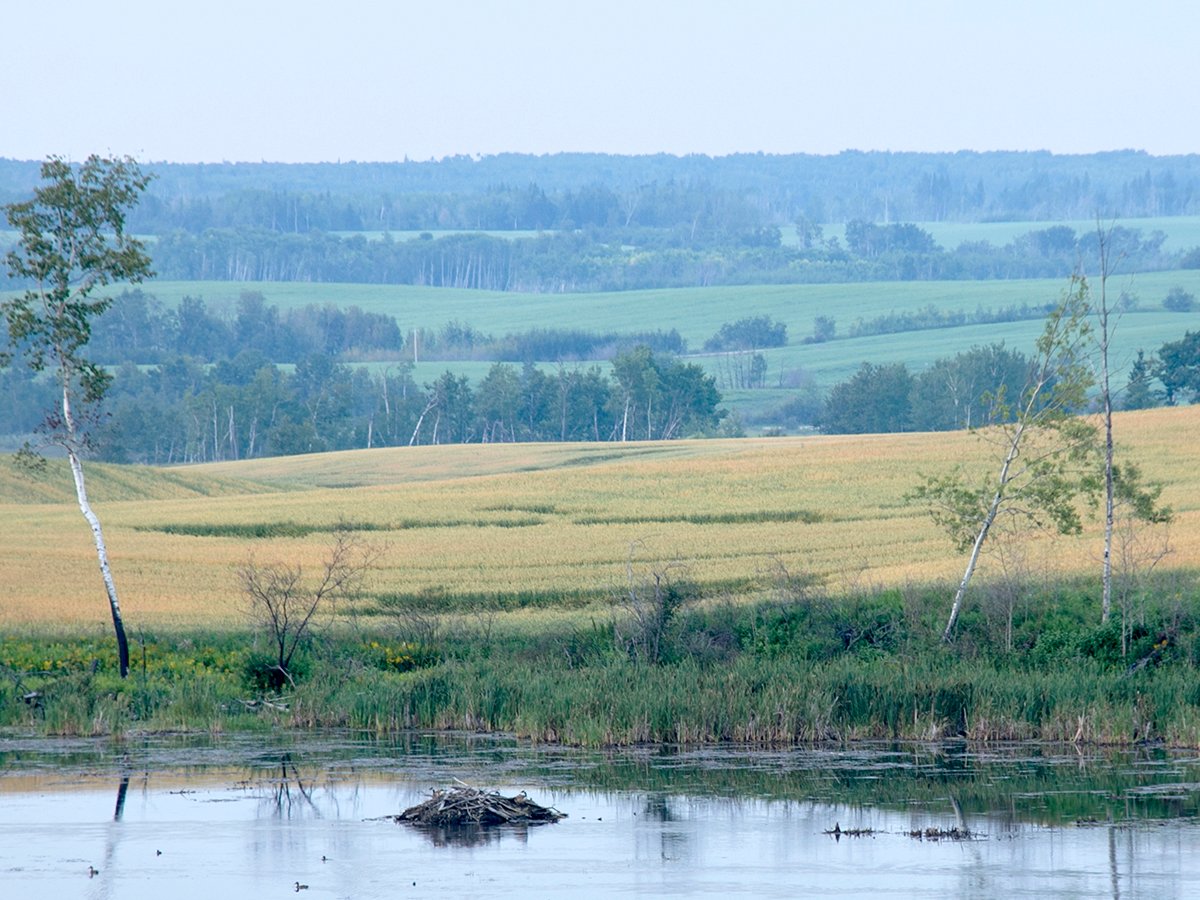INNISFAIL, Alta. – Ed Palkot sees red every harvest and after 65 years on the combine, the Innisfail senior would not have it any other way.
Since he started farming in 1942, the implement of his choice has been Massey Ferguson. He retired from full-time farming in 1994, but is back every year to help his son-in-law and daughter, Bill and Marilyn Howard, bring in the crop.
“It’s something I have done for so many years now, that I just love to get on the combine,” he said.
Read Also

Intergenerational rollover rules can help succession plans
One of the most significant concerns in succession planning for farmers is the tax bill that can come with passing the farm to the next generation.
Palkot’s loyalty to the brand earned him a 50 year recognition from the Massey company in 1992.
“I’ve always been Massey. I’ve demonstrated some others they brought out. They wanted to sell me other makes, but I always ended up with the Massey.”
This year’s wet harvest in central Alberta was delayed past Thanksgiving so the two generations had time to compare notes on the evolution of farming.
“How things have changed,” said Palkot.
In 1914, his father, Egnes Palkot, got off the train at Innisfail with a backpack and a pick axe to find his homestead 40 kilometres away at Stauffer where Ed was born. He farmed there until 1955 when he and wife Ferna bought three quarters of land at Innisfail. Their daughter and son-in-law, Linda and Ray Smith, have turned that place into a ranch so there is no longer any combining.
Bill Howard married Marilyn Palkot in 1974 and they doubt there will be a third generation on this land, which Bill took over from his father. Their three children are not interested in returning.
“There’s no kids around so I don’t know what is going to happen,” Howard said.
The start-up investment is too great and there are higher paying, less stressful jobs available elsewhere.
Palkot started farming with his father at age 16 and never left agriculture, whereas his son-in-law worked off the farm in the oil patch up until five years ago. Marilyn works for the Innisfail group home and crisis centre.
Besides the lifestyle changes, the hardware has changed over the years.
Polkat’s 1944 model would take all day to do what Howard’s MF 9690 is capable of doing in an hour.
The old model hoppers had a capacity of about 30 bushels. On a good day they could harvest 800 bu. covering 20 acres. The modern hopper holds 300 bu., the yields are higher and they cover more acres.
The old machinery was simple. The cylinder or feeder could be unplugged with a crowbar and farmers sat out in the open, eating dust and getting windburned.
New models have GPS capabilities with enclosed air-conditioned cabs full of computerized components.
“You can just about go out in your suit and combine,” Palkot said.
He used to upgrade his combine every four years. His first self-propelled machine was the 21A Massey Harris and his last purchase was an MF 8460.
He eventually ran two combines as the farm expanded in size. There was always a hired man and neighbours to bring in the harvest.
Now, the Howard family relies on Palkot to drive the combine because there is no help available. They know he loves to help, so he is their first choice.
Other changes had to be made on Howard’s 111/2 quarters of land. Whereas his father-in-law left a third of the land fallow every year, Howard switched to zero tillage to prevent wind erosion and save on labour and fuel.
“It allowed me to seed a lot more acres by myself. It saves on fuel and wear and tear,” said Howard.
There are some aspects of the old days neither man misses. Up until 1949, horses were used to pull grain tanks off the field to granaries. A big innovation was buying a one ton truck and a grain auger rather than shoveling every kernel into a wooden grain bin.
Palkot’s granaries were homemade wooden bins that could hold 1,200 bu. Howard uses aerated steel bins capable of holding 10,000 bu. each.
“I couldn’t get rid of the wooden bins fast enough,” said Howard.
Diversification was practised to a small degree during the war years. Grain was worth little so Palkot sowed grass seed. When grass seed prices plunged, he went back to growing more barley, receiving about $1.30 a bu. in 1951.
Palkot bought his first dryer in 1968 despite neighbours who warned it would be parked in the corner of a field. Rainy years followed and it was put to good use on both farms. In 1968, propane cost 10 cents a gallon but Howard paid 40 cents a litre this year to power his dryer. Palkot’s gas powered tractor was also cheaper to run. A 45 gallon barrel of gasoline was less than $6.
“Water costs more than that now,” said Howard.
When Palkot started farming grain receipts were lower but land was cheaper and they didn’t buy chemicals for fertilizer or weed control.
“The expenses are what kills the farmer now,” he said.















